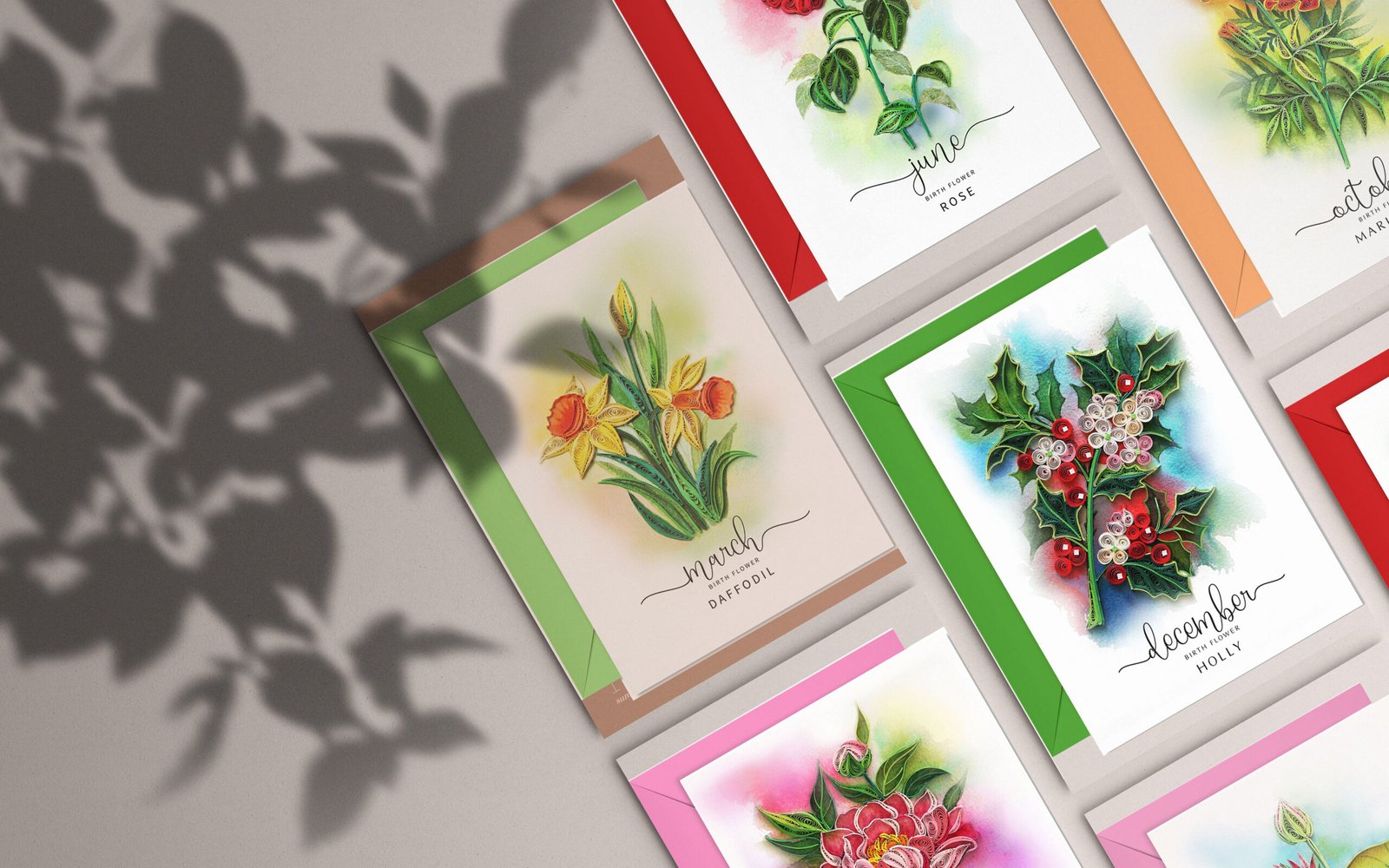
Paper quilling, also known as paper filigree, is the art of rolling narrow strips of paper into coils or scrolls and arranging them to form elegant filigree.
Quilling starts with rolling a strip of paper into a coil and then pinching the coil into shapes that can be glued together. The paper is rolled, looped, curled, twisted, and otherwise manipulated to create intricate designs for decorating greeting cards, work baskets, tea caddies, coats of arms, storage, and jewelry boxes.

HISTORY OF QUILLING
The origin of quilling as an art form is traced to Renaissance Europe when nuns and monks used it to decorate book covers and religious items. The paper most commonly used was strips of paper trimmed from the gilded edges of books.
However, two other competing theories argue that the roots of quilling can be traced to much earlier times. Some researchers say it began in ancient Egypt, while others believe it originated in ancient China following the invention of paper.
Quilling became even more popular in 18th-century Europe as gentle ladies of quality (women from the nobility and ruling class) took up the art. It was thought to be one of the few things a lady could do that would not demand too much from her mind or fragile disposition. From then on, quilling spread to the Americas and the rest of the world.

THE RISE, FALL, AND RISE AGAIN
For some reason, in the following centuries, it became unpopular with art lovers before enjoying a brief resurgence with niche craft makers in the 70s and 80s and then fizzling out again. It does appear to be making a comeback again, and hopefully, this time, it catches on with the larger population and remains for good.
Today, quilling is now used for decorating wedding invitations, Christmas, birth announcements, greeting cards, scrapbook pages, picture frames, and mobile phone cases.
Quilling’s latest resurgence has also brought with it advanced techniques and special-sized paper that can be utilized to create 3D miniatures, abstract art, flowers, and portraits, among many things. It is also now combined or married with other techniques such as embroidery and painting.
Despite its intricate arrangements, quilling is relatively easy to master, and with the array of resources available today, it can be taken up by almost everyone. The basic techniques can be learned from DIY platforms like blogs and YouTube.
QUILLING IN THE 21ST-CENTURY QUILLING
Quilling’s comeback in the 21st century has taken a more practical format, with many contemporary designers focusing on functionality rather than just ornamentation. We examine some of the quilling formats that have become popular with its latest resurgence.
Wearable Art: apparently, quilling artists (and their clients) must have said to themselves, why spend all that time creating these art pieces if you are only going to have it hung up in a fixed place at home? Why not show it off in the good old way by making it into jewelry? And so, one place where quilling is finding a new life is in wearable art.
Thankfully a host of new tools and techniques now allow quillers to create a variety of new shapes and endless intricate arrangements that make quilling the perfect choice for a DIY jeweler.

3-D Quilling: Because we are in the era of artificial intelligence and 2-D is for prehistoric man. Modern quillers have taken to something called 3-D quilling, and now designs no longer have to be glued down and stationary. And just like its name implies, with 3-D quilling, designs can literally go upward and off the page with no limits to what can be accomplished.
These advancements in quilling are partly down to the improvements in paper quality that offers wider and heavier weighted paper than was typically available in the past. This, coupled with new techniques, has allowed quillers to create breathtaking “paper sculptures.”

Technique Combination: just when it felt like it couldn’t get any better, contemporary quillers took things to a whole new level by combining diverse techniques to create what can pass for magic.
Some craft makers have managed to combine an eclectic mix of different visual art styles like painting, mosaic arrangement, and printmaking with quilling. The results so far have been nothing short of stunning, thereby rekindling hope that quilling has finally come to stay.







